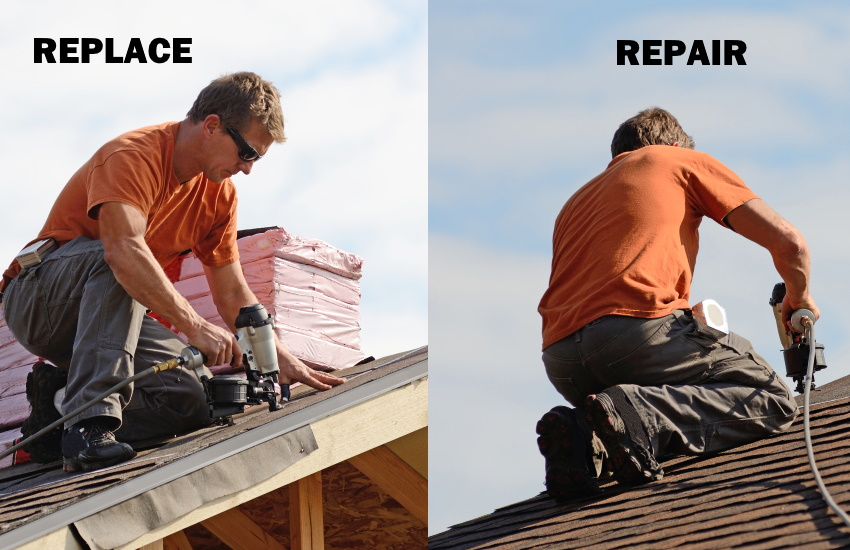Agencia 92: Your Source for Trending News
Stay updated with the latest insights and stories that matter.
When Leaky Roofs Attack: Your Survival Guide to Quick Fixes
Discover essential quick fixes for leaky roofs and save your home from water damage. Don't let leaks dampen your spirit—act now!
Essential Tools for Tackling a Leaky Roof: What You Need to Know
When faced with a leaky roof, having the right tools can make all the difference in ensuring a successful repair. Essential tools include roofing nails for securing shingles, a roofing hammer for driving nails, and a utility knife for cutting through asphalt shingles. Additionally, a ladder is vital for reaching high areas safely. For more comprehensive repairs, having a caulking gun and a suitable roofing sealant will help to seal any gaps and prevent future leaks. Remember, safety is paramount; equip yourself with safety goggles and a sturdy harness when working on a sloped roof.
In addition to basic tools, there are a few other items worth considering for a thorough approach to managing a leaky roof. A tarp can provide immediate protection against rain while you assess the problem. A bucket is essential for catching drips and preventing water damage inside your home. For leaks due to worn-out materials, a shingle remover will be necessary for replacing damaged tiles effectively. Finally, a moisture meter can help you detect water damage and mold hidden beneath surfaces, ensuring you address not just the symptoms but the root cause of ongoing issues.

Quick Fixes for Common Roof Leaks: A Step-by-Step Guide
Roof leaks can cause significant damage to your home if not addressed promptly. Fortunately, there are some quick fixes you can implement until a permanent solution is installed. Begin by identifying the source of the leak, which may be due to damaged shingles, flashing, or clogged gutters. Use a ladder to inspect your roof carefully, and if you find missing or cracked shingles, replace them immediately. For minor leaks around flashing, you can apply roofing cement or sealant to reinforce these areas.
To effectively fix common roof leaks, follow this simple step-by-step guide:
- Gather necessary tools such as a ladder, roofing cement, a putty knife, and new shingles if required.
- Inspect the roof thoroughly to find the leak's origin and remove any debris.
- If using roofing cement, apply it generously over the affected area and smooth it out with a putty knife.
- For shingle replacement, lift the damaged shingles and slide in new ones, securing them with nails.
How to Identify the Source of Your Roof Leak: Tips and Tricks
Identifying the source of your roof leak is crucial to preventing further damage to your home. Start by conducting a visual inspection from both the inside and outside of your property. Look for water stains on ceilings and walls, as these are often indicators of a leak's location. Additionally, check for damaged or missing shingles, as well as cracked or aging flashing around chimneys and vents. If your roof is accessible, consider using a garden hose to systematically wet areas of the roof, while someone inside watches for leaks. This methodical approach can pinpoint the origin of the leak more accurately.
Once you've narrowed down potential leak sources, consider the impact of weather conditions on your roof. Heavy rain or high winds can exacerbate existing vulnerabilities. It’s also important to examine the gutter system, as clogged gutters can lead to water pooling and seeping under shingles. Keep an eye out for areas where the roof's pitch changes, as these are often weak points. If you're unable to determine the cause of the leak or if it seems extensive, do not hesitate to contact a professional roofer. They have the experience and tools necessary to identify and fix the leak efficiently, ensuring your home remains safe and dry.